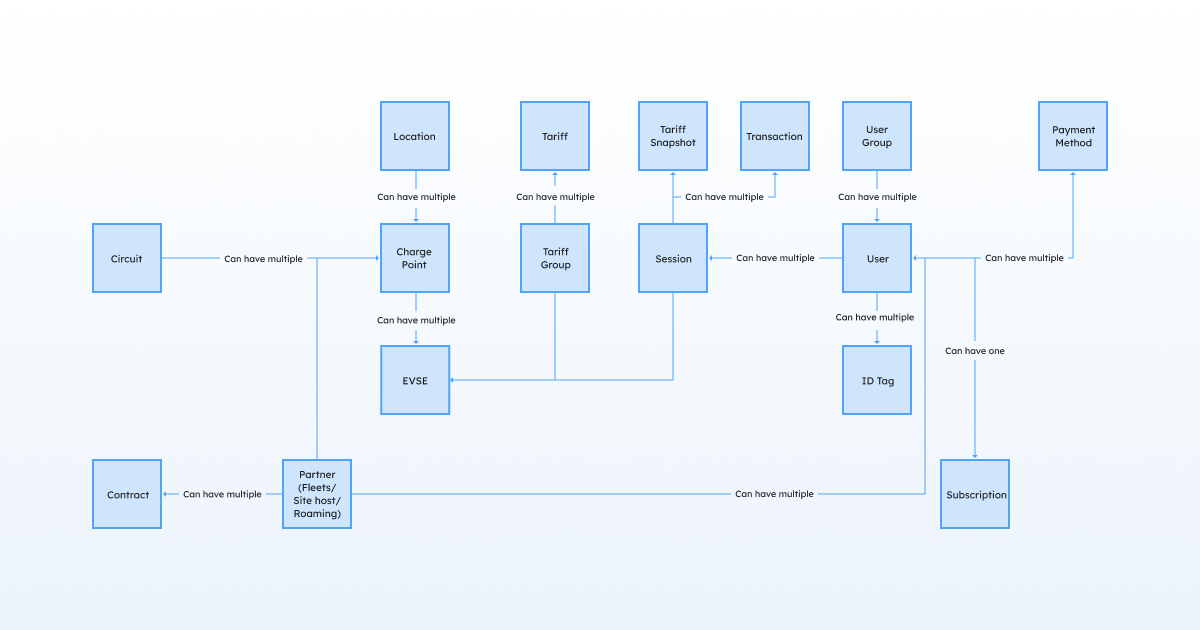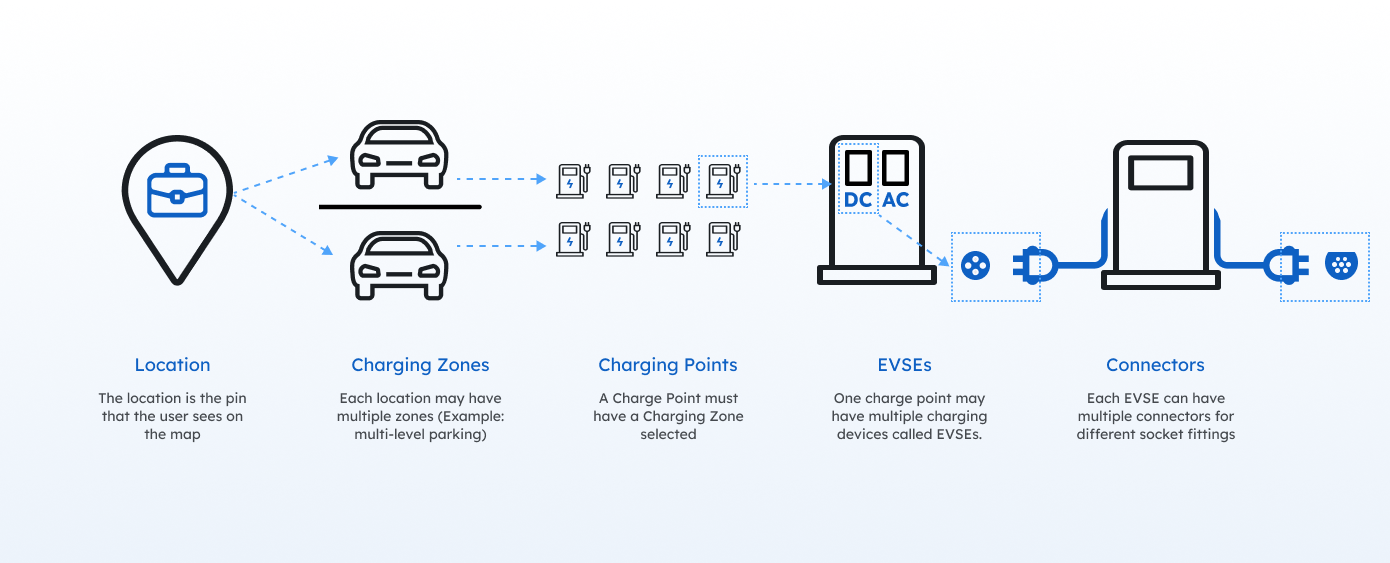Models relationship

The models' relationship is a high-level diagram showing how different models are linked. These models mirror the existing logic of the AMPECO Platform. Below, you can find a couple of examples:
User <> User Groups
Multiple Users can represent a User Group: a batch of user resources where shared business logic can be applied all at once: tariff, subscription plan, partner affiliation.
A user could be associated with multiple User Groups at the same time related to:
- access/permissions to specific Locations
- special pricing rules
- system tag for reporting or to be used in external flows
Partner <> Partner Contract
For each Partner, the Operator could have multiple contracts to establish site-specific attributes:
- Revenue-sharing rules
- Maintenance/operational costs of the Operator
- Access and permissions outsourced to the Partner
Location <> Charging Zone <> Charge point <> EVSE <> Connector

Tariff <> Session
To ensure compliance and traceability of end-user billing, there is a link between the Tariff and the Session in the form of a snapshot capturing the exact tariff parameters at the moment of session start.
Session <> Transaction
While the Session object contains all events related to the process of an EV charging (initiation, authorization, energy consumption/transmission, billable periods, process conclusion), the Transaction summarizes the payment aspects (Amount, Reference ID, Payment Status, etc.) that are used for end-customer Payment processing.
Updated about 2 years ago
